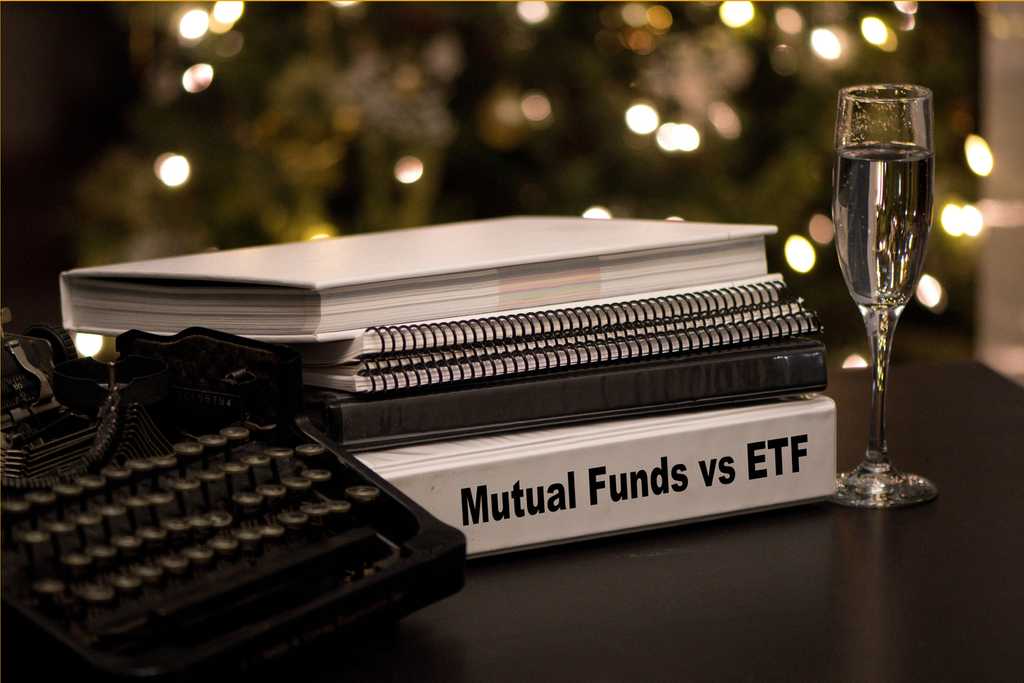Index funds have received a lot of positive press in recent years and deservedly so. They have a number of positive attributes for investors. Actively managed mutual funds are also a popular choice for many investors. There are a number of excellent active mutual funds and some that are not as solid. As an investor faced with these choices, it's important to understand the differences between index funds and active mutual funds.
What is an index fund?
An “index fund” refers to an investment approach of a fund, whose objective is to match the performance of a stock or bond market index such as the S&P 500, the Russell 2000 or the Bloomberg Barclays Aggregate Bond Index. The fund is managed in a way that closely replicates the underlying stocks or bonds that comprise the index in the proportion to the security’s weighting in the index.
The index fund can be structured as a mutual fund, or as an exchange-traded fund (ETF).
The major difference between ETFs and mutual funds is that shares of ETFs are bought and sold on the stock exchange during trading hours much like shares of individual stocks.
Index mutual funds and ETFs use a passive management style meaning their investment goal is to match the performance of the index by constructing a portfolio that matches the holdings of the index, there is little or no additional trading beyond what is needed to match the index the fund is tracking.
What is a mutual fund?
A mutual fund is a pooled fund that takes the money of a number of investors and invests this money under the direction of a professional money manager. Mutual funds can invest in a variety of assets such as stocks and bonds, as well as combinations of different types of securities.
Mutual funds can be passively managed index funds as discussed above. They can also be actively managed where the fund manager makes decisions as to which stocks or bonds to buy or sell with an objective of beating the funds index benchmark or its peer group of funds with the same investment objective.
Key differences
There are a number of differences between index funds and actively managed mutual funds.
Passive versus active management
The most basic difference between an index mutual fund and an actively managed mutual fund is the style of management used by the fund manager.
Index funds are passively managed. The main objective of the fund manager is to passively replicate performance of the index the fund is designed to match, In order to achieve this objective the fund’s manager buy and sell securities periodically to rebalance to fund to the appropriate weightings for the securities that comprise the index the fund is trying to match.
Some index funds may rebalance the fund’s holdings on a daily basis to match the weightings of the securities in the index fund to that of the actual index, others may rebalance the fund’s underlying holdings less frequently.
Actively managed mutual funds seek to outperform the fund’s index benchmark or some other metric. The fund manager will choose which stocks or bonds to own and may actively buy and sell specific securities on a frequent basis. Actively managed funds typically invest based on a specific strategy that might require they be overweight in some types of stocks or bonds and underweighted or not invested at all in others.
Investment Goals
The goal of an index mutual fund is to replicate the holdings and the performance of the index that the fund is tracking. For example the ishares Russell 2000 ETF (ticker IWM) is an ETF that seeks to replicate the performance of the Russell 2000 index. The Russell 2000 is an index of small cap U.S. stocks and is a key market index in this asset class.
Managers of actively managed mutual funds seek to beat the appropriate market index or other benchmark that is most applicable to their fund. They will typically seek to outperform other mutual funds and ETFs, both passive index funds as well as other actively managed funds, in their peer group. A peer group is typically other funds in an asset class such as large cap blend funds or foreign stock funds.
They may seek to outperform the fund’s benchmark on an absolute basis or may look to outperform on a risk-adjusted basis. By this we mean the raw performance might lag the benchmark, but when the potential downside risk of the fund is taken into account, the performance may exceed its peers.
An active manager might invest according to a proprietary investment strategy. This might be based on the manager’s research, a valuation formula or some other methodology. Investors in an actively managed fund may do so because they believe in the fund manager’s investing approach or because the fund has amassed a solid investing track record.
Cost Difference
Much has been written about the importance of keeping investing costs low, and the impact of costs on the long-term wealth of investors. The SEC (Securities and Exchange Commission) did a study of a hypothetical investor who invested $100,000 over a 20-year period with a 4% gross return. They looked at the impact of 0.25%, 0.50% and 1.00% in annual investment expenses on their cumulative net returns.
They found that the difference between the investor whose expenses were 0.25% and the one whose expenses were 0.50% amounted to a $10,000 reduction in the value of their investment over the 20-year period. The difference in the ending portfolio value between the investor whose expenses were 0.25% and the one whose expenses were 1.00% was about $30,000 or roughly a difference of 14% in the amount accumulated over the hypothetical 20-year period.
In this context, one of the biggest advantages of most index funds is that they generally offer lower costs then their actively managed mutual fund counterparts. This is in large part due to the passive management style of index funds. Lower trading activity in and of itself will result in lower costs for the fund managers to pass on to investors in the index funds and ETFs.
In addition, conceivably the management costs associated with an index fund are lower. An active fund manager needs to employ research to decide which securities the fund should hold, including the securities to buy and sell over time in line with the manager’s investing methodology.
In their most recent study based on mutual fund and ETFs expense ratios through the end of 2019, Morningstar indicated:
- The asset-weighted average expense ratio for all mutual funds and ETFs was 0.45%.
- The asset-weighted average expense ratio for all actively managed funds was 0.66%.
- The asset-weighted average expense ratio for all passively managed funds was 0.13%.
The asset -weighted average is the average for the funds weighted by the relative level of assets in each fund. This method gives more weight to larger funds in the sample.
Related to the cost of owning an index fund or actively managed mutual fund is the tax efficiency of the fund. This is a real cost of ownership if the fund is held inside of a taxable investment account.
Index funds, especially index ETFs, tend to be more tax efficient than actively managed mutual funds. This is due to the relatively low turnover rate of the portfolio of an index fund compared to that of an actively managed mutual fund. This translates into the index fund generating a lower level of capital gains that need to be distributed to the fund’s investors.
Which is riskier to invest in?
The risk of either an index fund or an actively managed mutual fund mostly lies in the types of securities the fund invests in. Stocks, bonds and specific types of each have their own unique set of risks.
For example an index fund that follows a foreign stock index and an actively managed mutual fund that invests in foreign stocks will both be subject to the risks of investing in this asset class. These include political and economic events, as well currency fluctuations compared with the U.S. dollar.
There is an added risk with an actively managed mutual fund and that is the risk of underperformance compared to its benchmark index. Even the top active managers will experience periods of underperformance. These may be short-lived or could span a longer period of time. The risk of underperformance of an actively managed fund is a real risk to investors.
Another risk that pertains to actively managed mutual funds is style drift. Many investors will choose an asset allocation strategy for their portfolio. This means a certain percentage of the portfolio is allocated to each of several investment styles. Index funds tend to stay true to their asset class because they seek to match the performance of an index that is tied to a specific investment style.
An active manager may stray from the mutual fund’s stated style a bit to enhance returns or add value. However this style drift might leave an investor over-allocated to one asset class and under allocated to another. This might leave the investor taking too much or too little risk compared to their investment goals and risk tolerance.
While index funds generally offer a low cost way to track a stock or bond market index, active managers offer the chance to earn larger returns by outperforming their market benchmark. It’s important to monitor active managers for warning signs such as a popular active mutual fund growing so large that they may not be able to continue delivering this market beating performance.
Another risk unique to actively managed mutual funds is manager turnover. Is the manager responsible for an active fund’s track record still with the fund? If not, then is it still worth investing in the fund?
Which is better?
Which is a better investment, index funds or actively managed mutual funds? Again the answer is that it depends. It’s also important to note that this is not necessarily an “either or” type question. It is totally permissible to mix both types of funds into your portfolio, in fact this is very common for many investors.
One strategy that some investors use combining index and active funds is core and explore. The core portion of the portfolio will generally use several index funds to cover core asset classes, for example large cap stocks, intermediate bonds and perhaps several others. The explore portion of the portfolio will use several actively managed mutual funds to add more return. These managers may invest in a way that spans several investment styles or asset classes.
For all of the positive aspects of using index funds, at the end of the day investors in index funds will earn what the various indexes that these funds track earn. In many instances that is not a bad result. But investors who only use index funds pay an opportunity cost of missing out on the superior returns earned by the best active managers.
Regardless of whether you ultimately invest in index funds, active funds or a combination of the two, it's important to have an investment strategy. Understand your goals, your time horizon for the money and your own risk tolerance. Also be sure that you understand how any fund, whether active or index, works.
It can make sense to consult with a financial advisor to discuss your situation and to seek their professional advice regarding the best investment strategy and individual investments for your situation.



